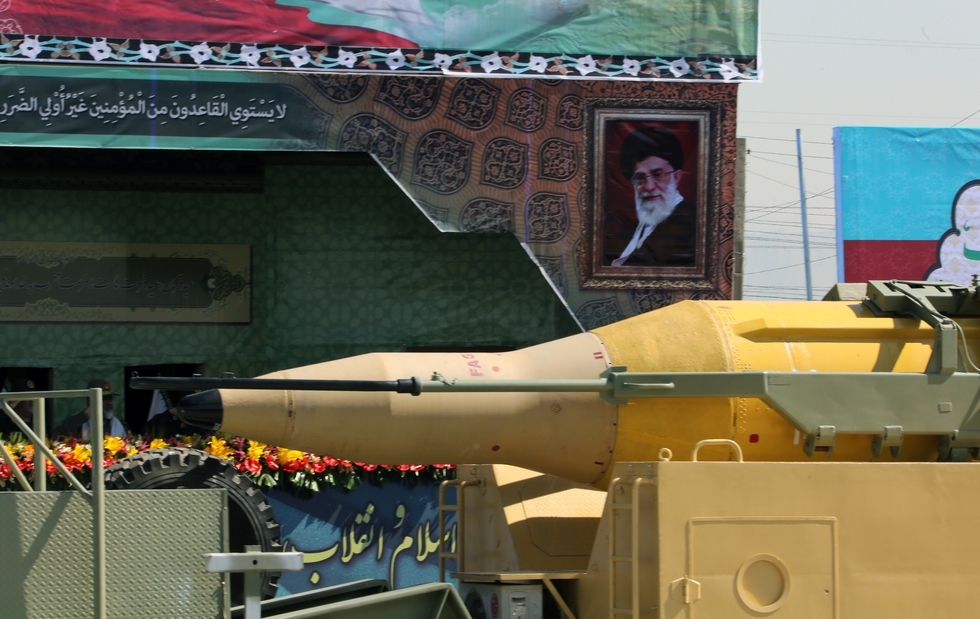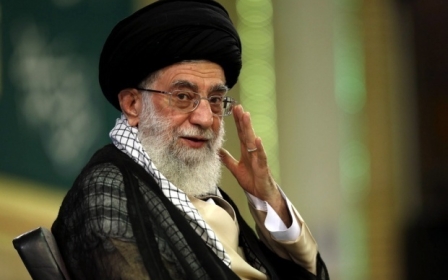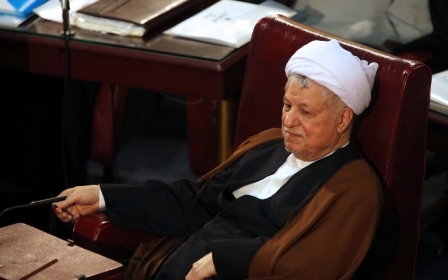Iran's Khamenei may face his most difficult decision yet

Following the conclusion of the landmark nuclear deal (JCPOA) in July between Iran and the world six powers, Iran’s Supreme Leader Ayatollah Ali Khamenei told Iranian President Hassan Rouhani that the agreement would be rendered void if any future sanctions were to be imposed on Iran. Any sanctions by “the opposing countries in the negotiations” under any pretext including “repetitive fake excuses of support for terrorism or human rights” would void the agreement, wrote Iran’s leader in a letter to Hassan Rouhani.
The instruction was understandable. Iran can only maintain a shadow of its nuclear programme, given that the nuclear deal requires Iran to dismantle thousands of its centrifuge machines. In addition, the deal requires that Iran ship out its enriched uranium stockpile (it has already shipped 25,000 pounds). In doing so, Iran will not be able to substitute its stockpile, as it is permitted to hold no more than 660 pounds under the JCPOA.
Moreover, Iran must severely restrict its nuclear-related research and development. Iran accepted all these restrictions in exchange for the removal of sanctions that have imposed significant pressure on Iran’s economy. As a result, if Iran accepts new sanctions adopted against it under different guises, the purpose of agreeing to the JCPOA would be defeated.
It may be surprising if one looks at the same issue from the perspective of the United States. This is particularly the case with the realisation that as a result of the nuclear deal the Americans’ hands have become tied in regards to a country that clearly presents itself as a US enemy. Short of war, sanctions are the most lethal weapon the Americans have at their disposal to confront unfriendly governments and advance their foreign policy.
If the US is stripped of this weapon in dealing with Iran because of the nuclear deal, it would be at the mercy of Iran’s hardliners for perhaps years to come. Perhaps at the time the Americans inked the nuclear deal, the negotiators did not take this outcome seriously. Nevertheless, new developments have brought the possibility into the spotlight.
Last October, Iran successfully test-fired Emad, a new precision-guided, long-range missile. The Emad surface-to-surface missile is the country's first long-range precision-guided missile with a range capable of reaching Israel, Iran’s principal enemy. The move resulted in a UN Security Council panel ruling that Iran violated Security Council resolution 1929, because the missile had the ability to deliver a nuclear weapon. It is noteworthy that this issue has no relation to the JCPOA.
The test sparked protest from the Americans. Then a recent Wall Street Journal report revealed that the US administration is planning a fresh round of sanctions on a number of Iranian companies and individuals that are assisting Iran’s missile development programme. However, the imposition of the sanctions was delayed and the Obama administration reportedly announced that it needed time to draft new sanctions against Iran over its ballistics programme.
Perhaps this is the case because the administration was informed by the Iranians that the nuclear deal would be off if new sanctions were introduced. It is also possible that Washington is buying time until Iran dismantles its nuclear system, for example, doing so irrevocably as it concerns the Arak reactor.
According to the JCPOA, Iran must remove the heart of Arak’s heavy water reactor, fill it with cement, redesign and rebuild another iteration of the reactor with the assistance of the world powers. It is possible that the Americans think that if the reactor is destroyed Iran will be at the West’s mercy in constructing a new one.
There are different theories behind Iran’s move in testing the Emad missile.
Some experts maintain that the Emad test was the manifestation of factional infighting within Iran. In other words, hardliners aimed to provoke a confrontation with the US and thus disrupt the process of the implementation of the JCPOA. The situation could tarnish the moderates’ success in bringing Iran’s nuclear crisis to an end and consequently affect their popularity.
The notion is that the hardliners encouraged the test out of fear of the moderates’ possible success in the sensitive upcoming elections for the Assembly of Experts, which could lead to choosing Iran’s next leader, alongside the parliamentary elections, in February.
Another group of observers assert that there is a consensus among all the Iranian political factions that Iran’s missile programme must not be halted and should be developed with the utmost intensity. All factions view the country’s large and diverse ballistic missile arsenal as the crucial element in its deterrence strategy. Simultaneously, when the Emad missile was fired, Tehran released a video and photos of a deep-missile bunker. According to the FARS News Agency, the facility shown was approximately 500 metres under a mountain, although the location was kept secret.
In any event, even if the new set of American sanctions fail to materialise, Iran will remain vulnerable to some sort of American sanctions in the future. This is the case given Iran’s expansion of its missile programme, its hostile stance and policies towards both the US and Israel, and the American Congress’s hostile position toward the Iranian establishment. At some point, then, the US unilaterally, or in alliance with the Europeans, may decide to confront some of Iran’s policies or actions. To make such a move, the Americans have no effective tool other than imposing sanctions.
In such an eventuality, Ayatollah Khamenei will face the most complex crossroads of his political career. It would be extremely costly and would inflict a significant damage to his stature among his followers if, as the symbol of resistance against the “global arrogance,” he were to ignore the imposition of new sanctions by the Americans.
But apart from political risks, ignoring the Americans’ new sanctions would not be an easy decision for Iran’s leader. The conservatives, who have been eagerly waiting for an opportunity to discredit both the nuclear deal and the moderates who made it happen, would promote a deafening propaganda campaign if the US adopts new sanctions against Iran. They would highlight the moderates’ naiveté about their lack of vision, or basirat, as they frequently refer to it, with respect to understanding the nature the Great Satan. They would surely refer to Khamenei’s letter to the moderate president, Hassan Rouhani, asking him directly, but also the leader indirectly, to call the nuclear deal off due to new sanctions.
Iran’s leader would be in a very difficult situation. On the one hand, it would be hard to back off from his own instructions. On the other, declaring the deal void would result in the sanctions automatically “snapping back’’ into place, according to the JCPOA. With oil prices plummeting, persisting high unemployment and recession, the return of sanctions could lead Iran’s economy into an abyss.
The sole question the hardliners could then raise would then be: “What did we gain in compromising with the US-led West, and who is going to be held accountable for our losses, including losing the enriched uranium stockpile and the destruction of the Arak reactor?” This will prepare the grounds for the return of the hardliners, taking over the executive branch, the only bastion of moderates.
- Shahir Shahidsaless is a political analyst and freelance journalist writing primarily about Iranian domestic and foreign affairs. He is also the co-author of “Iran and the United States: An Insider’s View on the Failed Past and the Road to Peace”.
The views expressed in this article belong to the author and do not necessarily reflect the editorial policy of Middle East Eye.
Photo: A military truck carries a Qadr medium-range missile past a portrait of Iranian supreme leader, Ayatollah Ali Khamenei, during a military parade on 22 September, 2015, in the capital Tehran (AFP).
Middle East Eye propose une couverture et une analyse indépendantes et incomparables du Moyen-Orient, de l’Afrique du Nord et d’autres régions du monde. Pour en savoir plus sur la reprise de ce contenu et les frais qui s’appliquent, veuillez remplir ce formulaire [en anglais]. Pour en savoir plus sur MEE, cliquez ici [en anglais].





